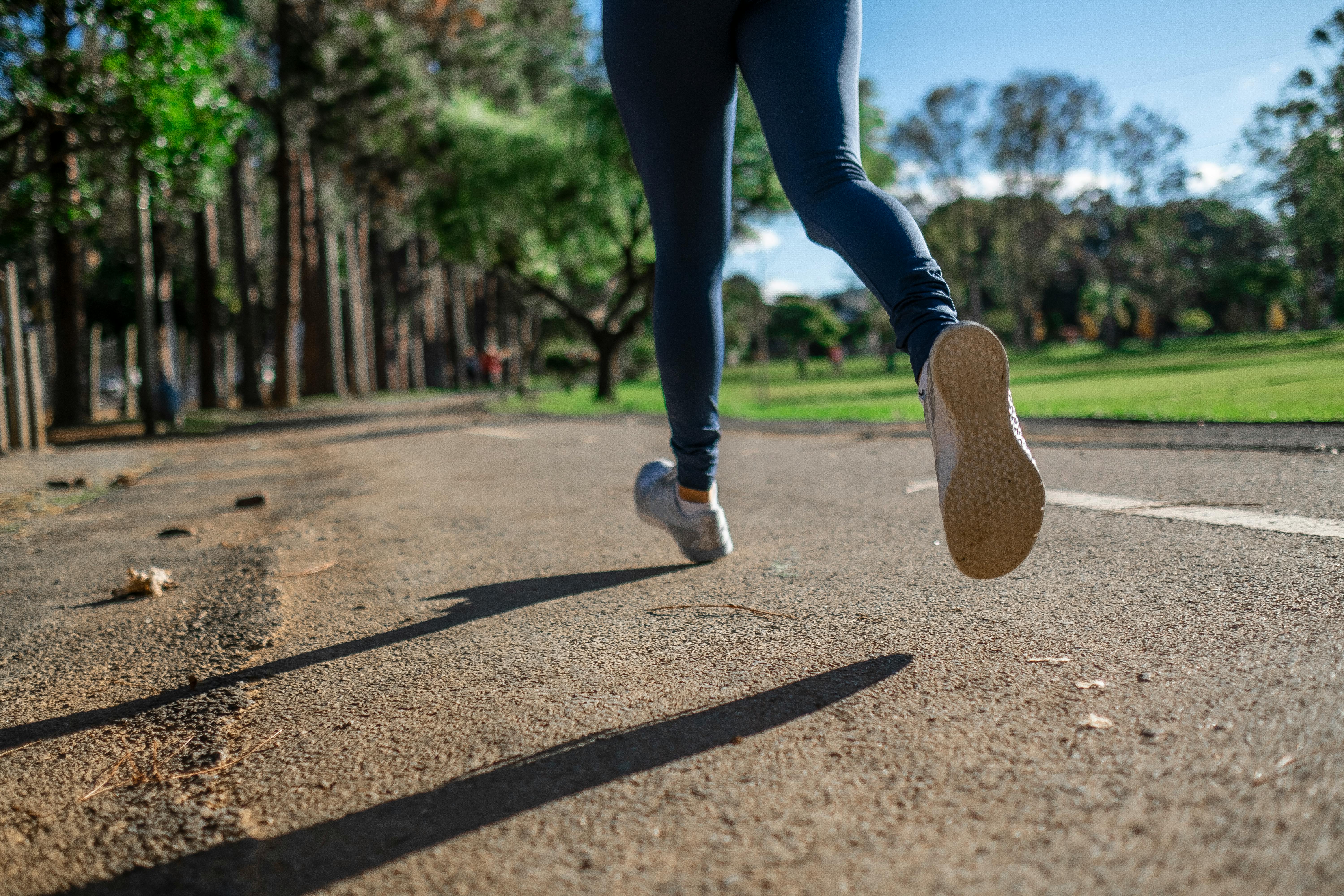Improve Your Running Form: A Step-by-Step Guide
Running is a fun and effective method to remain in shape; in fact, it’s nearly become a fashion statement. However, it’s crucial to use the right approach. Want to follow the crowd yet follow the rules? Utilize this manual to learn how to improve your strength and avoid accidents. Here are some more resources to get you started.
Achieve basic fitness level: improve running-form

Image via Pexels.com
Starting from scratch, rushing out the front door and onto your first 10k will make you angry, upset, and sore that you’ll never do it again. To put it another way, don’t take on more than you can handle. Without any prior workout habits, if you start running, you’ll definitely wind up hurting yourself and giving up before you ever get going.
The easiest course of action would be to begin walking. But that doesn’t matter; as long as you exercise regularly, your body will be able to withstand the upcoming pavement pounding. Go swimming, dancing, or hiking. The more fun the better!
Good pair of shoes
According to several studies, running barefoot causes fewer injuries than jogging in running shoes of any kind, even the most expensive ones. You won’t likely be sprinting barefoot though, unless you’re pursuing a child or a meatball that accidentally rolled away. So try to find running shoes that can mimic barefoot jogging. More power to you if you’re willing to wear Vibram, but there are plenty other minimalist running shoes available without toe sleeves. A good pair of running shoes shouldn’t interfere with your stride.
Warm up: improve running-form

Image via Pexels.com
The last thing you need are hamstring or shin splint tears, or any other avoidable injuries. Spend five to ten minutes warming up before your run. This does not, however, entail stretching. In actuality, static stretching prior can be harmful!
Instead, warm up your muscles by performing exercises like lunges, deadlifts, and other similar movements that both stretch and activate your muscles. Put off stretching until after your run.
Always keep a relaxed stance
Maintain a loose, relaxed, but not hunched-over body. Try to maintain a relaxed posture with your back straight and your shoulders and arms free. Remain calm and relaxed throughout. Holding stress there causes your spine and the rest of your body to become tense, which can cause you to become fatigued far earlier than you would otherwise.
Steady and deep breath: improve running-form
The most important thing is to breathe regularly so that your body receives a steady supply of oxygen. Be a belly breather rather than a chest breather. Utilizing your diaphragm, make an effort to swell your stomach. Your heart and other muscles will receive more oxygen, and you’ll feel less fatigue.
You shouldn’t worry about using your mouth or nose to breathe. Others discover that breathing in through the nose and out through the mouth works best for them in terms of getting the most oxygen when running. Find whatever strikes you as being effective.
If you’re running comfortably, you should be able to talk briefly with another runner without stopping.
Look ahead: improve running-form

Image via Pexels.com
Keep your head level and avoid gazing up or down. If you’re sprinting more than 400 meters, look around 35 feet in front of you. Avoid looking down at your feet or the controls while using a treadmill to avoid straining your back.
Know arm movement
Keep your elbows close to your body and at a 90-degree angle. For extended distance, use a 110-degree angle (apart from when you are climbing a hill). Swing your arms back and forth in time with the leg on the other side to create propulsion and keep your body from twisting.
Avoid clenching your fists. Your palms will start to perspire and you’ll squander energy. Consider that each of your hands contains two delicate goods, and that if you clench your muscles too much, you will break the items.
Avoid having your hands cross your torso’s midline to prevent a twisting motion. Possibly leading to cramping.
Improve your cadence: improve running-form

Image via Pexels.com
Aim for 180 ground contact points per minute. Keeping your feet off the ground as much as possible is the simplest approach to achieve this. It’s up to you whether you’re jogging leisurely or sprinting away from a mob; just be careful not to push yourself too hard.
Follow your comfort level. Be easy on yourself if you can’t run a mile in under eight minutes. With time, it will happen. It’s fantastic that you’re out there exercising! Every time you hit the pavement, just try to get a little bit better.
See how your feet land
As you run, let your feet touch the ground. When you go for your actual runs in the gym or on the trail, try to imitate it.
Be careful not to exercise excessive control, though. It ought to seem natural. Avoid trying to impose a particular strike type because doing so will put more stress on your body.
You should sprint while maintaining as much contact with the ground as you can with your balls of your feet. The closer you get to flying, the less you’ll even be touching the earth. But even if you’re going far, it’s advisable to avoid jogging on your heels. Injury might result from the angle formed between the foot and calf when you fall on the rear of your foot.
Cool down and stretch: improve running-form

Image via Pexels.com
Over the course of around 5 minutes, gradually reduce your pace from running to jogging and from jogging to walking before finishing your workout. This reduces the amount of work your heart has to do while your breathing and circulation return to normal following your run.
It’s time to stretch right now. Since your calves, glutes, and hamstrings were the ones that worked the hardest, pay attention to them. Because the muscles tend to tense up when running, it is crucial to stretch afterward. They become more at ease and return to normal after being stretched out. Tomorrow, you’ll need them so much!





One Comment on “Improve Your Running Form: A Step-by-Step Guide”